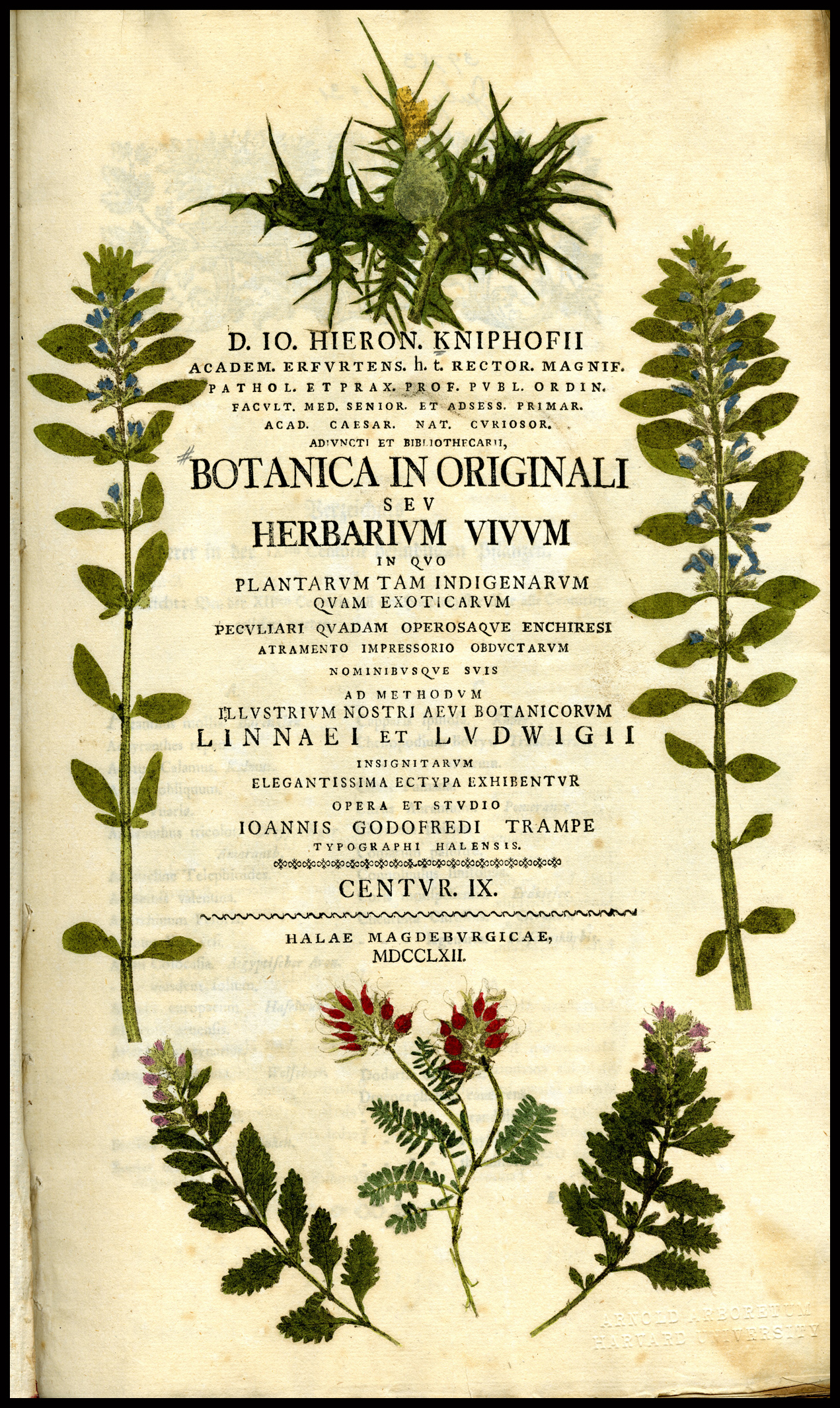Herbarium Vivum on:
[Wikipedia]
[Google]
[Amazon]

 A ''Herbarium vivum'' (plural ''Herbaria viva'') is a collection of plants and images, and their descriptions from a particular locality. The images were produced by a process doubtless suggested by
A ''Herbarium vivum'' (plural ''Herbaria viva'') is a collection of plants and images, and their descriptions from a particular locality. The images were produced by a process doubtless suggested by
here
Henrik Bernard Oldenland, a

 A ''Herbarium vivum'' (plural ''Herbaria viva'') is a collection of plants and images, and their descriptions from a particular locality. The images were produced by a process doubtless suggested by
A ''Herbarium vivum'' (plural ''Herbaria viva'') is a collection of plants and images, and their descriptions from a particular locality. The images were produced by a process doubtless suggested by engraving
Engraving is the practice of incising a design onto a hard, usually flat surface by cutting grooves into it with a burin. The result may be a decorated object in itself, as when silver, gold, steel, or glass are engraved, or may provide an in ...
and lithography
Lithography () is a planographic method of printing originally based on the immiscibility of oil and water. The printing is from a stone (lithographic limestone) or a metal plate with a smooth surface. It was invented in 1796 by the German a ...
whereby an object coated with printer's ink or other suitable substance, is pressed onto paper, leaving behind an impression. An earlier method had used the lampblack derived from the sooty flame of a candle or lamp. The impression could then be painted over in colour with the certainty that form and size had been accurately fixed. The technique was adapted to circumstance, leading to mounting of dried plant material such as flowers, leaves or fruits, and supplemented by painting or sketching parts too bulky for pressing, so that a reasonable semblance of the complete plant could be formed.
Hieronymus Harder
Hieronymus Harder (1523 – April 1607) was a German botanist and teacher of Latin.
Harder was born in Meersburg in the Lake Constance region of Germany, but part of his youth was spent in Bregenz, where his father taught from 1535 onwards. ...
produced a ''Herbarium vivum'' in 12 volumes, the earliest dating to 1562. One of the volumes from 1576 is kept at the Bayerische Staatsbibliothek
The Bavarian State Library (german: Bayerische Staatsbibliothek, abbreviated BSB, called ''Bibliotheca Regia Monacensis'' before 1919) in Munich is the central " Landesbibliothek", i. e. the state library of the Free State of Bavaria, the bigg ...
and is onlinhere
Henrik Bernard Oldenland, a
Cape Colony
The Cape Colony ( nl, Kaapkolonie), also known as the Cape of Good Hope, was a British colony in present-day South Africa named after the Cape of Good Hope, which existed from 1795 to 1802, and again from 1806 to 1910, when it united with t ...
botanist assembled a ''Herbarium vivum'' of some 13 volumes which found their way into the possession of Johannes Burman
Johannes Burman (26 April 1707 in Amsterdam – 20 February 1780), was a Dutch botanist and physician. Burman specialized in plants from Ceylon, Amboina and Cape Colony. The name ''Pelargonium'' was introduced by Johannes Burman.
Johannes ...
, professor of botany in Amsterdam. Kniphof's 1759 ''Herbarium vivum'' comprised some 1200 botanical illustrations. In 1834 the astronomer John Herschel, facing a similar problem of accurate delineating, used a camera lucida
A ''camera lucida'' is an optical device used as a drawing aid by artists and microscopists.
The ''camera lucida'' performs an optical superimposition of the subject being viewed upon the surface upon which the artist is drawing. The artist s ...
to pencil in the outlines of Cape Colony
The Cape Colony ( nl, Kaapkolonie), also known as the Cape of Good Hope, was a British colony in present-day South Africa named after the Cape of Good Hope, which existed from 1795 to 1802, and again from 1806 to 1910, when it united with t ...
plants while his wife Margaret then painted in the details.
References
{{reflist